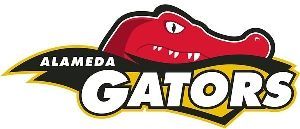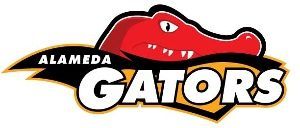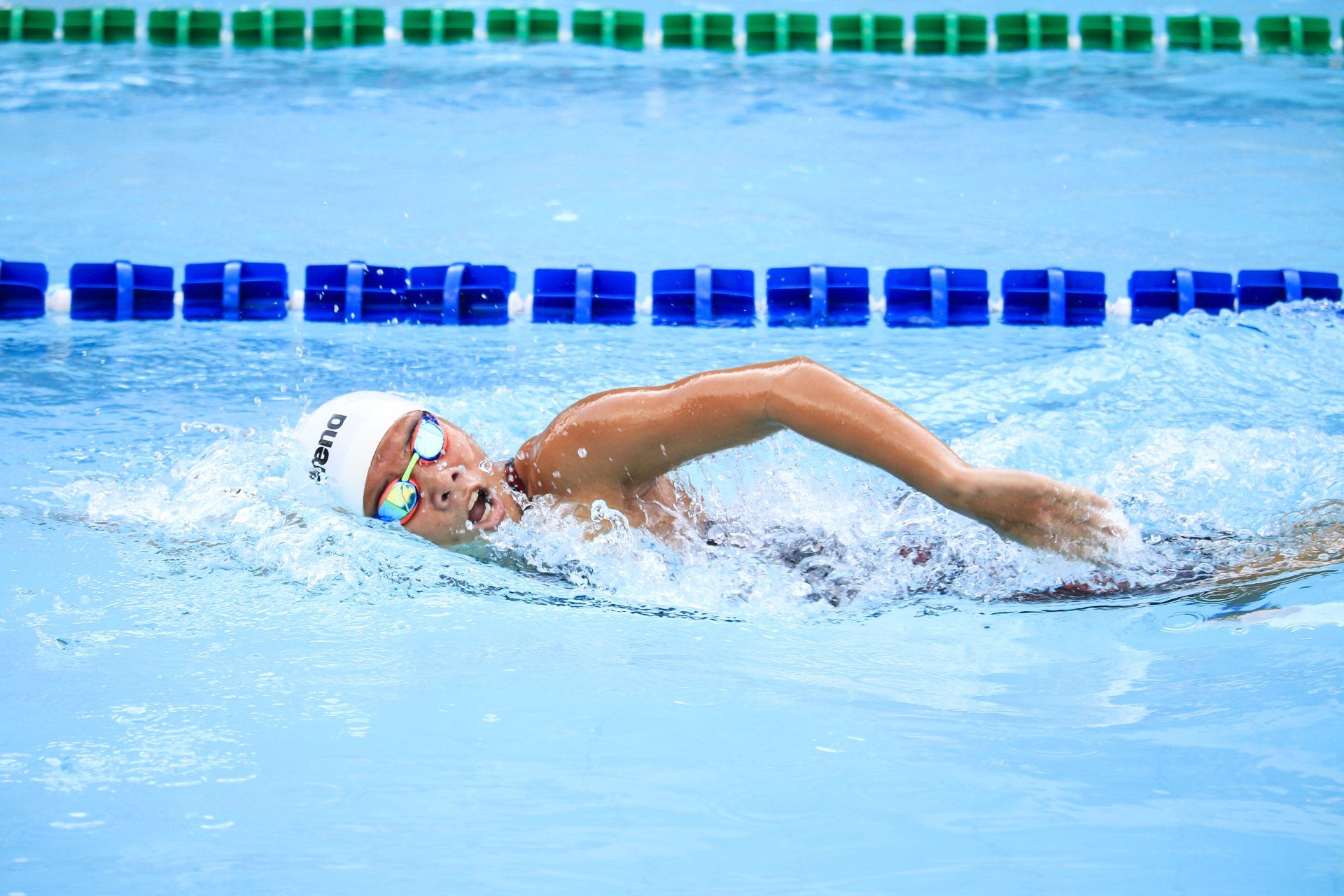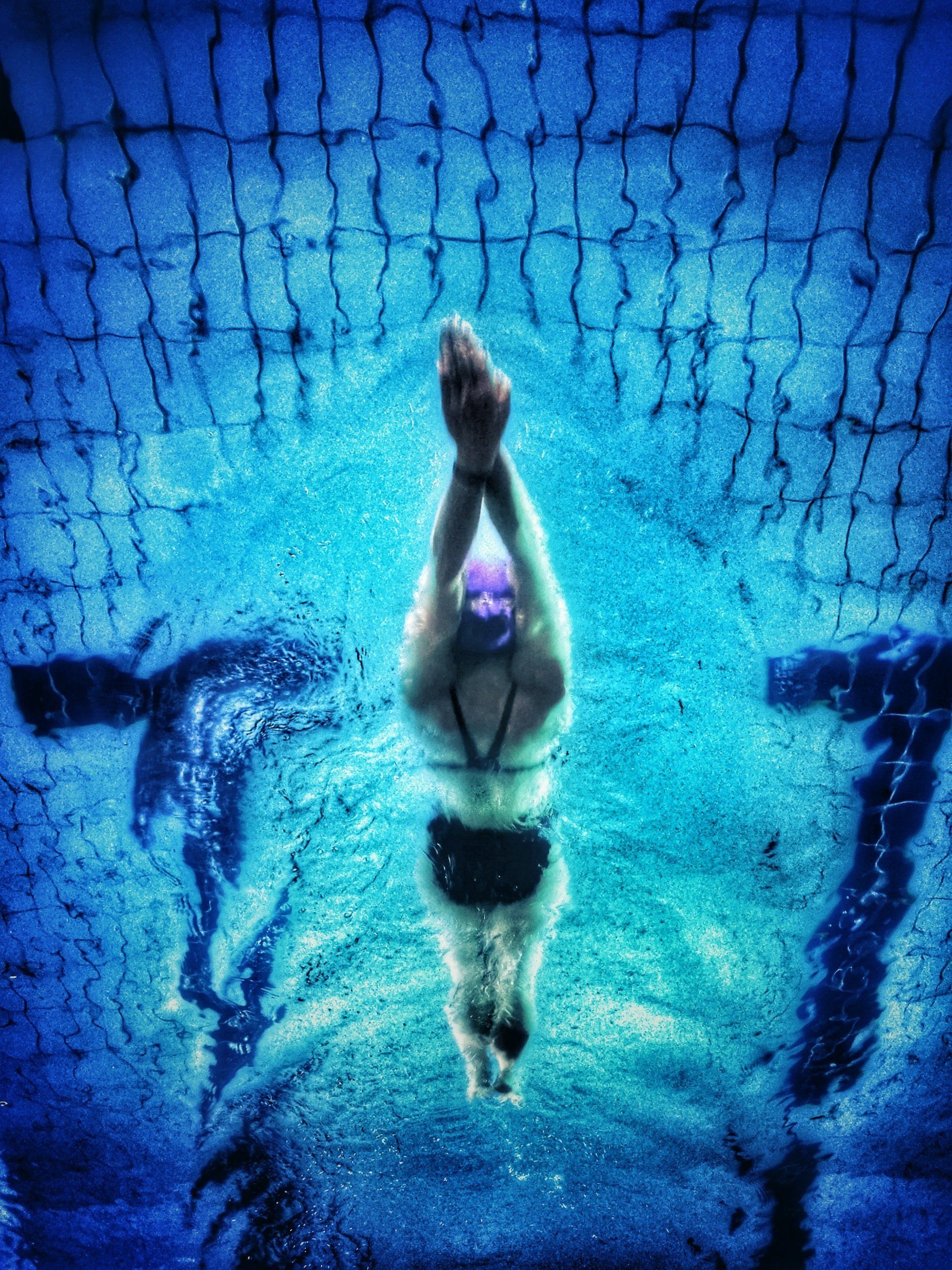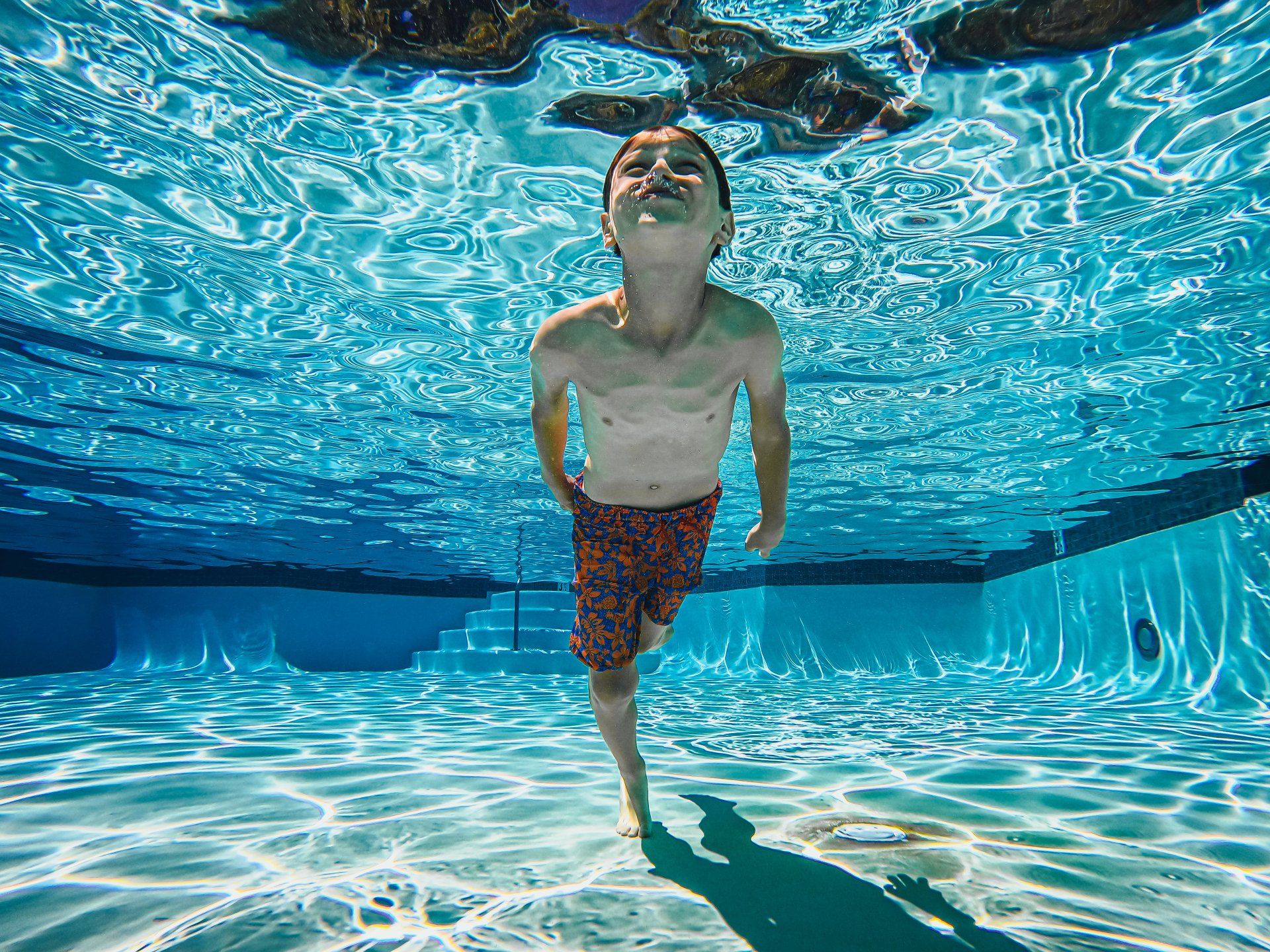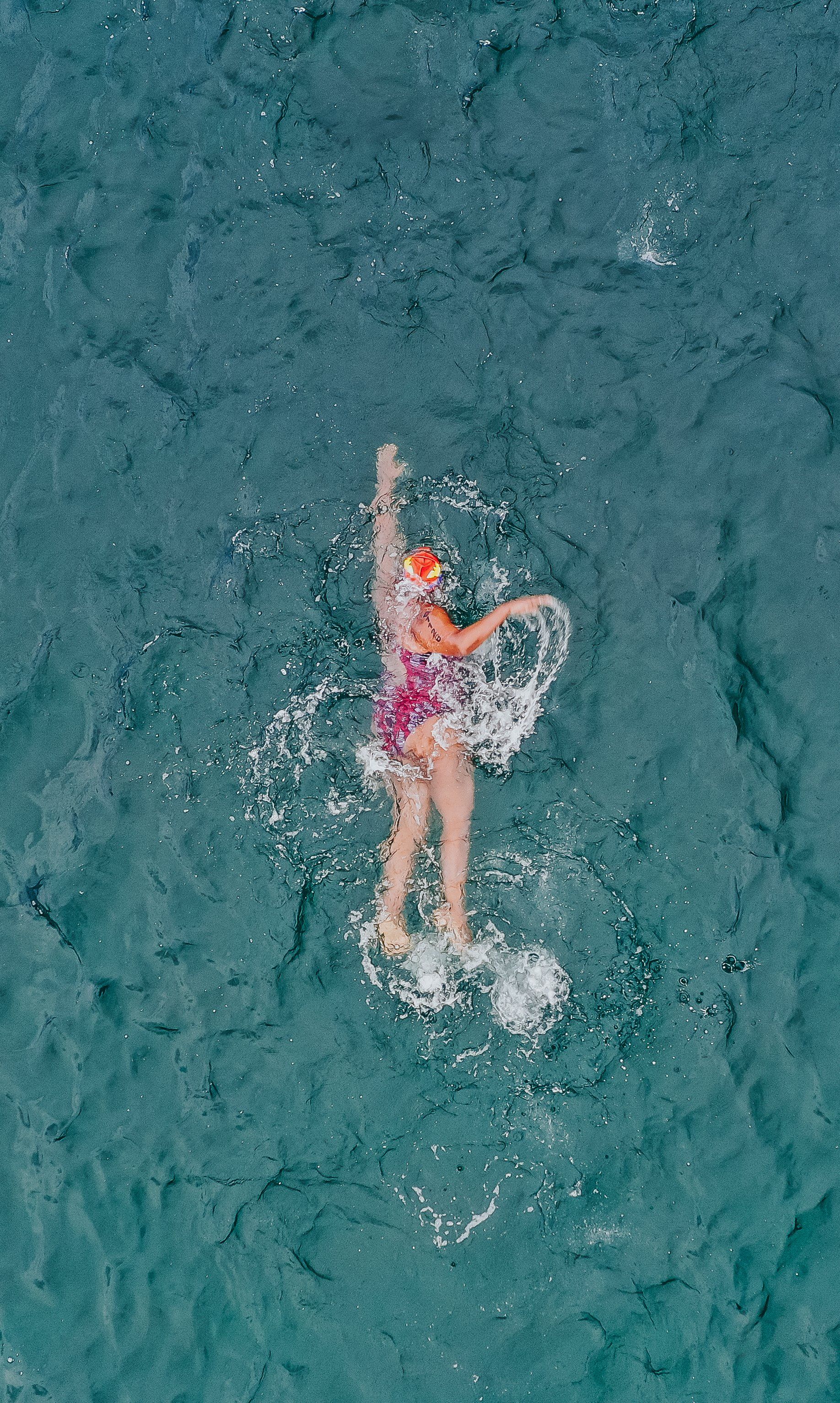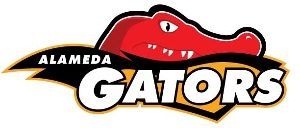Terminología de natación
GLOSSARY OF SWIMMING TERMS
ADAPTED FROM USASWIMMING.ORG
There are a lot of strange and unusual words used in swimming. You may or may not find these words in the English Dictionary, and if you do, their definitions will probably be radically different than the ones listed in this Glossary. Relax and take your time reading. Soon you'll be understanding and maybe even speaking some "swim slang."
Age Group – Division of swimmers according to age. The National Age Group divisions are: 10-under, 11-12, 13-14, 15-16, 17-18. Pacific Swimming also has an 8-under division.
Encuentro de grupos de edad: una competencia en la que los eventos se dividen por edad, a diferencia del tiempo de entrada.
Alternate – In a Prelims/Finals meet (see below for the definition of that), after the finalists are decided, the next two fastest swimmers other than the finalists are designated as “alternates.” The faster of the two is the first alternate and the next is the second alternate. If a finalist cannot participate, the alternates are called to take their place.
Ancla: el último nadador en un relevo. También es un término que los entrenadores usan para el comienzo de los cuatro golpes, indicando el “codo alto”, “atrapa” o “antebrazo vertical temprano”.
Approved Meet – A meet conducted with sufficient USA Swimming officials to certify conformance to USA Swimming rules. The meet may include competitors who are not USA Swimming members. The meet may be a competition sanctioned at the LSC level with the added approval of USA Swimming because both member and non-member athletes will be competing.
ASCA - The American Swim Coaches Association. The professional organization for swim coaches throughout the nation. Certifying coaches and offering many services for coaches' education and career advancement.
Attached - swimmers are registered in US Swimming through their team, compete in official meets, and score points for that team. Our swimmers are “attached” to ALGA.
Backstroke - One of the four competitive racing strokes, basically any style of swimming on your back. Backstroke is swum as the first stroke in the Medley Relay and second stroke in the I.M. Racing distances are 25 yard (8-under only), 50 yards/meter, 100 yards/meter, and 200 yards/meter.
Blocks - The starting platforms located behind each lane. Minimum water depth for use of starting blocks is 4 feet. Blocks have a variety of designs and can be permanent or removable.
Braza: uno de los cuatro estilos de carrera competitivos. La braza se nada como segunda brazada en el relevo combinado y como tercera brazada en IM Racing. Las distancias son 25 yardas (solo 8 bajo par), 50 yardas/metro, 100 yardas/metro y 200 yardas/metro.
Butterfly - One of the four competitive racing strokes. Butterfly (nicknamed “fly”) is swam as the third stroke in the Medley Relay and first stroke in the I.M. Racing distances are 25 yard (8-under only), 50 yards/meter, 100 yards/meter, and 200 yards/meter.
Campamento: una función de natación ofrecida por USA-S, su LSC o un entrenador de USA-S. Hay muchos tipos de campamentos para casi todos los niveles de nadador. Al seleccionar un campamento, pida consejo a su entrenador sobre cuál será lo mejor para el nadador, o consulte el sitio web de natación de USA-S para obtener detalles sobre los numerosos campamentos que ofrecen.
Cap - a latex or lycra swim cap used during a race or workout to protect a swimmer’s hair from the effects of chlorine in the water as well as help cut down water resistance.
Carbohydrates - The main source of food energy used by athletes. Refer to a Nutritional Manual for more information.
Encuentro de campeonato: el encuentro que se lleva a cabo al final de una temporada. Los tiempos de clasificación suelen ser necesarios para entrar a la competición.
Championship Finals - The top six or eight swimmers (depending on the number of pool lanes) in a Prelims/Finals meet who, after the prelims are swum, qualify to return to the Finals. The fastest heat of finals, when multiple heats are held.
Check-in - an administrative procedure at meets where the swimmer signs in to confirm his/her intention to swim an event.
Clasificación en círculo: un método para clasificar a los nadadores cuando participan en un evento preliminar/final. Los nadadores más rápidos, entre 18 y 24, son clasificados en las últimas tres eliminatorias, y los nadadores más rápidos se encuentran en los carriles interiores.
Clínica: una reunión programada con fines de instrucción. (es decir, clínica del oficial, clínica del entrenador).
Closed Competition - Swim meet which is only open to the members of a specific organization or group. Summer club swim meets are considered to be "Closed Competition."
Club: un equipo de natación registrado que es miembro que paga cuotas de USA-S y del LSC local.
Código de conducta: un código de conducta que tanto los nadadores como los entrenadores deben firmar en ciertos eventos patrocinados por USA-S/LSC. El Código no es estricto e implica sentido común y comportamiento adecuado.
Colorado Timing System - A brand of automatic timing system that is used at most Pacific Swimming meets.
Consolation Finals - After the fastest six or eight swimmers, the next six or eight swimmers (depending on the number of pool lanes) in a Prelims/Finals meet who, after the prelims are swum, qualify to return to the Finals. Consolations are the second fastest heat of finals when multiple heats are held and are conducted before the Championship heat.
Convention - United States Aquatic Sports annual, week long, meeting where all rules changes are decided and working committees are established. Representatives are sent by each LSC to make up the voting body.
Course - Designated distance (length of pool) for swimming competition. Long Course = 50 meters / Short Course = 25 yards or 25 meters.
Deadline - The date meet entries must be received by, to be accepted by the meet host. Making the meet deadline does not guarantee acceptance into a meet since many meets are "full" weeks before the entry deadline.
Deck - The area around the swimming pool, often reserved for only swimmers, officials, and coaches. No one but an "authorized" USA Swimming member may be on the deck during a swim competition.
Deck Entry – Entering meet events on-site at the meet. It is VERY uncommon for deck entries to be accepted at Pacific Swimming meets.
Deck Seeding – When heat and lane assignments are posted after swimmers have checked in or have “scratched” (indicated they will not participate in the event.) Swimmers are placed in proper heats and lanes according to their seedtime just prior to the event.
Deshidratación: agotamiento anormal de los líquidos corporales (agua). La causa más común de calambres y malestar en los nadadores.
Developmental - A classification of meet or competition that is usually held early in the season. The purpose of a developmental meet is to allow all levels of swimmers to compete in a low-pressure environment.
Distancia: qué tan lejos nada un nadador. Las distancias para el campo corto son: 25 yardas (1 largo), 50 yardas (2 largos), 100 yardas (4 largos), 200 yardas (8 largos), 400 yardas (16 largos), 500 yardas (20 largos), 1000 yardas (40 largos), 1650 yardas (66 largos). Las distancias para recorrido largo son: 50 metros (1 largo), 100 metros (2 largos), 200 metros (4 largos), 400 metros (8 largos), 800 metros (16 largos), 1500 metros (30 largos).
Diving Well - A separate pool or a pool set off to the side of the competition pool. This pool has deeper water and diving boards/platforms. During a meet, this area may be designated as a warm-down pool, if there is proper supervision.
División I-II-III: a los colegios y universidades miembros de la NCAA se les asignan divisiones para competir, según la inscripción total de la escuela. La División I son las universidades grandes y la División III son las universidades más pequeñas.
DQ – short for “disqualification.” Happens at a meet when a swimmer does not swim a stroke according to the guidelines set forth by US Swimming. A disqualification is shown by an official raising one arm with open hand above their head. If a swimmer is disqualified from an event, the finish time is not recorded.
Traje de arrastre: un segundo traje de baño holgado que usan los nadadores durante el entrenamiento y el calentamiento para agregar una cierta cantidad de peso y resistencia al flujo del agua alrededor del nadador. El concepto es similar a un bateador que hace swing con dos o tres bates mientras está en la cubierta en un juego de béisbol.
Dry land - The exercises and various strength programs swimmers do out of the water.
Dual Meet - Type of meet where two teams/clubs compete against each other.
Inscripción: lista de eventos de un individuo, un equipo de relevos o un club en una competencia de natación.
Entry Fees - The amount per event that a swimmer or relay is charged. This varies depending on the LSC and type of meet.
Entry Limit - Each meet will usually have a limit of total swimmers they can accept, or a time limit they cannot exceed. Once an entry limit has been reached, a meet will be closed and all other entries will be returned.
Electronic Timing - Timing system operated on DC current (battery). The timing system usually has touchpads in the water, junction boxes on the deck with hook up cables, buttons for backup timing, and a computer-type console that prints out the results of each race. Some systems are hooked up to a scoreboard that displays swimmers times.
Event - A race or stroke over a given distance. An event equals 1 preliminary with its final, or 1 timed final.
False Start - occurs when a swimmer leaves the starting block, or is moving on the block, before the starter officially starts the race. Once the starter says “take your marks,” all swimmers must remain motionless until the starting horn sounds. In USA Swimming, one false start will result in an automatic disqualification from the race.
Far Westerns - large championship meets, held twice a year and limited to FW-level swimmers. These include top swimmers from the western US and very often, teams from other countries. One Far Western meet is held in March at the end of short course (25-yard pool) season and the other is held in early August following long course (50-meter pool) season.
Fastest to Slowest - A seeding method used on the longer events held at the end of a session. The fastest seeded swimmers participate in the first heats followed by the next fastest and so on.
FINA - Federation Internationale de Natation Amateur, el organismo rector internacional de la natación competitiva, los clavados, el waterpolo y la natación sincronizada.
Finals - The final race of each event. See "Consolation Finals", "Timed Finals", etc.
Final Results - The printed copy of the results of each race of a swim meet.
Aletas: grandes dispositivos de goma tipo aletas que se ajustan a los pies de un nadador. Se utiliza en la práctica de natación, no en competición.
Flags - Pennants that are suspended over the width of each end of the pool approximately 15 feet from the wall. Used by swimmers in backstroke to judge how close they are to the wall.
Freestyle - One of the four competitive racing strokes. Freestyle (nicknamed “free”) is swum as the fourth stroke in the Medley Relay and fourth stroke in the I.M. Racing distances are 25 yards (8-under only), 50 yards/meter, 100 yards/meter, 200 yards/meter, 400 mtr/500, yd 800 mtr/1000 yds, 1500 mtr/1650 yds.
Goals - The short- and long-range targets for swimmers to aim for.
Goggles - Eyewear worn by swimmers in the pool to protect the swimmer’s eyes from the effects of chlorine in the water.
Onda de gravedad: acción de las olas causada por el movimiento de los cuerpos de los nadadores en el agua. Las ondas de gravedad se mueven hacia abajo y hacia adelante desde el nadador, rebotan en el fondo de la piscina y regresan a la superficie en forma de turbulencia.
Vuelta de pistola (o campana): la parte de una carrera de distancia de estilo libre (400 metros o más) cuando al nadador le quedan dos largos más cinco yardas. El juez de salida dispara un tiro (o toca una campana) sobre el carril del nadador líder cuando el nadador está en las banderas de espalda, para indicar que solo quedan dos vueltas en la carrera.
Gutter - The area at the edges of the pool in which water overflows during a race and is re-circulated into the pool. Deep gutters catch surface waves and don’t allow them to wash back into the pool and affect the race.
Heats - All of the swimmers entered in the event are divided into heats, or groups of swimmers. The results are compiled by the times swum, after all heats of the event are completed.
Premio de Serie: Una cinta, cupón u otro premio otorgado al ganador de una serie única en una competencia de natación de grupos de edad.
High Point - An award given to the swimmer scoring the most points in a given age group at a swim meet. Not all meets offer high point awards; check the Meet Sheet.
HOD - House of Delegates. The ruling body of an LSC composed of the designated representative of each club plus the board of directors (BOD) of the LSC. One vote per club and board member. Also refers to the national USA-S convention meeting.
Horn - A sounding device used to start races. Used mainly with a fully automatic timing system.
Illegal - Doing something against the rules that is cause for disqualification.
I.M. - short for “Individual Medley,” an event in which the swimmer uses all four competitive strokes in the following order: butterfly, backstroke, breaststroke, and freestyle. Equal distances must be swam of each stroke. Distances offered: 100 yards, 200 yards/meters, 400 yards/meter.
J.O.’s (Junior Olympics) - Held three times a year in Pacific Swimming for swimmers who have achieved the JO time standard in an event.
Salto: salida ilegal realizada por el segundo, tercer o cuarto miembro de un equipo de relevos. El nadador en el bloque rompe el contacto con el bloque antes de que el nadador en el agua toque la pared.
Nacionales Junior: un campeonato de EE. UU.-S para nadadores de 18 años o menos. Los tiempos de calificación son necesarios.
Kick Board - A flotation device used by swimmers during practice.
Carril: el área específica en la que se asigna a un nadador para nadar. (es decir) Carril 1 o Carril 2.
Líneas de carril: los divisores utilizados para delinear los carriles individuales. Están formados por discos con aletas individuales colgados de un cable, que giran sobre el cable cuando son golpeados por una ola. Los discos giratorios disipan las ondas de tensión superficial en un grupo competitivo.
Lap - One length of the course. Sometimes may also mean down and back (2 lengths) of the course.
Contador de vueltas: las tarjetas numeradas grandes (o la persona que da vuelta las tarjetas) utilizadas durante los eventos de estilo libre de 500 yardas o más. El conteo se realiza desde el extremo opuesto al inicial. Los números en las tarjetas son "números impares" sólo y la vuelta final está designada por una tarjeta de color naranja brillante.
Pierna: la parte de una prueba de relevos nadada por un solo miembro del equipo. Un solo golpe en el IM
Long Course - a pool configured for swimming with a 50-meter long racing course. World records may be set in long course and short course competition. The main US Swimming Long Course season is during the summer months. The Olympic Games as well as all major international competitions are conducted in long course pools.
LSC - Comité Local de Natación. La división administrativa a nivel local de la corporación (USA-S) con responsabilidades de supervisión dentro de ciertos límites geográficos. El LSC de ALGA es Pacific Swimming (PC).
Marshall - The officials who control the crowd and swimmer-flow at a swim meet.
Meet - A series of events held in one program.
Meet Director - The official in charge of the administration of the meet. The person directing the "dry side" of the meet.
Hoja de competencia: la hoja informativa oficialmente aprobada para cada competencia de natación aprobada por Pacific Swimming. La hoja de encuentro incluirá información sobre la ubicación, las reglas, los eventos y otros detalles logísticos de la competencia.
Hora Nacional Reportable (NRT): el estándar de tiempo nacional de grupos de edad utilizado para compilar los tiempos de los 16 principales grupos de edad de USS cada temporada.
Nationals - USA Swimming National Championship meet conducted in March/April (short course) and August (long course).
NCAA - National Collegiate Athletic Association
División negativa: una estrategia de carrera en las pruebas de estilo libre de distancia en la que un nadador cubre la segunda mitad de la cara más rápido que la primera mitad.
Non-Conforming Time - A short course time submitted to qualify for a long course meet, or vice versa.
NT - No hay tiempo. La abreviatura utilizada en una hoja de clasificación para designar que el nadador no ha nadado antes en ese evento.
Observed Meet - A meet that is not conducted according to USA Swimming rules (high school, YMCA) where a request for observation has been processed and approved in advance. Sufficient USA Swimming officials are present to certify that the athletes' swims are in compliance with USA Swimming technical rules.
Observed Swim - A swim observed by assigned USA Swimming officials for conformance with USA Swimming technical rules in a meet conducted under other than USA Swimming rules.
Official - a certified adult judge on the deck of the pool. Various judges watch the swimmer’s strokes, turns and finishes or are timers.
Pruebas olímpicas: la competencia de natación en piscinas largas aprobada por EE. UU. y Estados Unidos se llevó a cabo el año de los Juegos Olímpicos para decidir qué nadadores representarán a EE. UU. en nuestro equipo olímpico. Los tiempos de calificación son más rápidos que los de los Senior Nationals.
Competencia abierta: competencia en la que puede participar cualquier club, organización o individuo calificado.
Pace Clock - The electronic clocks or large clocks with highly visible numbers and second hands, positioned at the ends or sides of a swimming pool so the swimmers can read their times during warm ups or swim practice.
Hora reportable del Pacífico (PRT): horas utilizadas para compilar los diez mejores nadadores del grupo de edad del Pacífico.
Pacific Swimming: el Comité Local de Natación (LSC) para esta área.
Palas: una ayuda para nadar que se fija a la mano. Generalmente se utilizan en grupos de mayor edad para trabajar la técnica de brazada y la fuerza.
Past Vertical - a disqualification used primarily in backstroke, where the swimmer is “past vertical” toward his/her stomach upon leaving the wall after a turn.
Practice - The scheduled workouts swimmers attend with their swim team/club.
Preliminares: Sesión de una reunión preliminar/final en la que se llevan a cabo las eliminatorias.
Prelims-Finals - Type of meet with two sessions. The preliminary heats are usually held in the morning session. The fastest six or eight (Championship Heat) swimmers, and the next fastest six or eight swimmers (Consolation Heat) return in the evening to compete in the Finals. A swimmer who has qualified in the Consolation Finals may not place in the Championship Finals even if their finals time would place them so. The converse also applies.
Hoja de psique: una hoja de inscripción que muestra todos los nadadores inscritos en cada evento individual. A veces se lo denomina "hoja de calor" o programa de reuniones.
Pull-Buoy - a swim aid used to keep the legs motionless. It is a flotation device that is held between the swimmers legs and is generally used by older swimmers.
Pulling Tarps - placing or removing the blankets on/from the top of a pool, which help minimize evaporation and keep the water temperature steady.
Tiempos de clasificación: tiempos publicados necesarios para participar en determinadas competiciones, o los tiempos necesarios para alcanzar una categoría específica de nadador.
Referee - the USA-S official who has the authority over all other officials at the meet. He/she makes all final decisions and sees to the efficient running of the meet.
Relevo: prueba de natación en la que participan cuatro nadadores como equipo. Cada nadador completa una distancia igual de la carrera. Hay dos tipos de relés: 1.)
Medley relay - One swimmer swims Backstroke, one swimmer swims Breaststroke, one swimmer swims Butterfly, one swimmer swims Freestyle, in that order. Medley relays are conducted over 200 yd/mtr and 400 yd/mtr distances. 2.) Freestyle relay - Each swimmer swims freestyle. Free relays are conducted over 200 yd/mtr, 400 yd/mtr, and 800 yd/mtr distances.
Relay exchange - the exchange between the swimmer in the water and the next swimmer on the relay team. A perfect exchange will simultaneously have the finishing swimmer’s hand on the touch pad and the starting swimmer’s feet just touching the starting block with the rest of the starting swimmer’s body extended over the water.
Roll - to move on the starting blocks prior to the starting signal. A roll is usually caught by the starter and called a false start, but swimmers will often try to guess the starter’s cadence and get a good start. This is similar to illegal procedure in football.
Sanction - A permit issued by an LSC to a USA-S group member to conduct an event or meet.
Sanction Fee - The amount paid by a USA-S group member to an LSC for issuing a sanction.
Sanctioned Meet - A meet that is approved by the LSC in which it is held. Meet must be conducted according to USA Swimming rules. All participants, including coaches, athletes and officials, must be USA Swimming members.
Scratch – The process by which a swimmer withdraws from an event that they have entered in. Some meets have scratch deadlines and specific scratch rules, and if these are not followed, a swimmer can be disqualified from later events.
Seccionales: apodo de Speedo Championship Series (ver más abajo).
Seed Time - the time a swimmer uses to enter an event. It is the swimmer’s personal best time in that event and determines the placement of heat and lane for a swimmer.
Sembrado: la ubicación de los nadadores en eliminatorias y carriles para eventos individuales.
Encuentro Senior: un encuentro de alto nivel en el que todos los nadadores registrados en USA-S que hayan cumplido el estándar de tiempo de clasificación para un evento específico son elegibles para competir. Consulte la Guía de natación del Pacífico para conocer los horarios.
Senior Nationals - A USA-S National Championship meet for swimmers of any age as long as the qualification times are met.
Short Course - a pool configured in 25-yard or 25-meter lengths. US Swimming conducts most of its fall/winter competition in 25-yard lengths, including the Speedo Junior National Championships in March. NCAA swimming competition uses the 25-yard format. Most of the world swims short course meters in the winter (25-meter pool). The fastest times swum in a 25-yard pool may only gain US Open or American record status. The short course season generally runs from September to March.
Speedo Championship Series: encuentros abiertos de "nivel senior" que se llevan a cabo en primavera y verano. Cada Zona podrá albergar hasta cuatro encuentros. Estos encuentros se llaman comúnmente
"Sectionals." Qualifying times, sites, dates and meet rules are determined locally.
Splash - The USA Swimming magazine that is mailed bi-monthly to all members of USA Swimming.
Split: tiempo intermedio de un nadador en una carrera. Los splits se registran cada 50 metros o 25 yardas, dependiendo de la piscina y el equipo disponible, y se utilizan para determinar si un nadador está en el ritmo previsto.
Inicio: el comienzo de una carrera. La inmersión solía iniciar una carrera.
Starter: El oficial encargado de señalar el inicio de una carrera y asegurar que todos los nadadores tengan un despegue justo.
Stand-up - The command given by the Starter or Referee to release the swimmers from their starting position.
Step-Down - The command given by the Starter or Referee to have the swimmers move off the blocks. Usually this command is a good indication everything is not right for the race to start.
Stroke - There are 4 competitive strokes: Butterfly, Backstroke, Breaststroke, Freestyle.
Stroke and Turn Judge - a certified USA-S official, who determines the legality of swimmers’ strokes and disqualifies those who do not conform to USA-S Rules.
Swim-off - In a Prelims/Finals type competition, a race after the scheduled event to break a tie. The only circumstance that warrants a swim-off is to determine which swimmer makes finals or an alternate, otherwise ties stand.
SWIMS - USA Swimming database system that keeps track of every time achieved by all swimmers. Available through the USA-S website.
Taper - the resting process in training for swimming competition. During the middle of the swimming season a swimmer may work out up to 10 to 15 thousand meters (8 to 10 miles) each day. As major competition draws near, the swimmer will taper off (reduce) the distances swum each day. A perfectly designed taper will enable the swimmer to compete at their peak capability and is one of the most difficult aspects of swim coaching.
Team Records - The statistics a team keeps, listing the fastest swimmer in the clubs history for each age group/each event.
Timed Finals - Competition in which only heats are swum and final places are determined by those times. Most regular Pacific Swimming meets run with timed finals.
Time Standard - A time set by a meet or LSC or USA-S (etc) that a swimmer must achieve for qualification or recognition. Time standards in Pacific Swimming include, from slowest to fastest: PC-B, PC-A, JO (junior Olympic), FW (Far Western), PRT (Pacific Recorded Time).
Timer - The volunteers sitting behind the starting blocks/finish end of pool, who are responsible for getting watch times on events and activating the backup buttons for the timing system.
Time Trial - An event or series of events where a swimmer may achieve or better a required time standard.
Top 10 - A list of times compiled by the LSC or USA-S that recognizes the top 10 swimmers in each single age group (boys & girls) by each event and distance.
Touch - the finish of the race, when the swimmer touches the touch pad or wall.
Panel táctil: la parte del sistema de cronometraje electrónico que reposa en el agua al final de cada carril. Los tiempos de los nadadores se registran electrónicamente cuando se toca la almohadilla. Se utilizan con mayor frecuencia en competiciones junior y superiores.
Transfer - The act of leaving one club or LSC and going to another. Usually 120 days of unattached competition is required before swimmer can represent another USA-S club.
Pruebas y finales: en una competencia de pruebas y finales, las pruebas se nadan con todos los nadadores ingresando al evento y generalmente se consideran rondas de clasificación para las finales.
Turnover - the number of times a swimmer’s arms turn over (cycle) in a given distance or time during a race.
Two-hand Touch - both hands must touch the wall simultaneously while swimming the butterfly and breaststroke.
No afiliado: un atleta miembro que compite, pero no representa a un club o equipo. (abreviado ONU) En Pacific Swimming, los atletas que nadan para un equipo de escuela secundaria durante la temporada de natación de escuela secundaria deben nadar como independientes en cualquier competición de LSC en la que participen, incluso si nadan con un equipo de club.
USA-S/USA Swimming: el organismo rector nacional de la natación competitiva amateur en Estados Unidos.
USA-S ID Number - A 16-part number assigned to a swimmer after they have filled out the proper forms and paid their annual dues.
Warm down – The recovery swimming that a swimmer performs after a race to rid the body of excess lactic acid generated during the race.
Warm-up - The practice and "loosening-up" session a swimmer does before the meet and/or before their event is swum.
Yards - The measurement of the length of a swimming pool that was built per specs using the American system. A short course yard pool is 25 yards (75 feet) in length.
Yardage - The distance a swimmer races or swims in practice. Total yardage can be calculated for each practice session.
Zonas (Nacional): el país está dividido en 4 zonas principales: Este - Sur - Centro - Oeste. Al final de la temporada de cursos largos (en agosto), la Administración de la Zona patrocina un campeonato de grupos de edad.
Zones (Pacific Swimming) - The Pacific Swimming LSC is divided up into 4 zones as well. ALGA is in Zone 2, which includes all of Alameda and Contra Costa Counties, as well as part of the San Joaquin Valley. Zone 2 hosts its own championship meet too, toward the end of short course season (typically sometime in February).
Zone 2 - a smaller unit within Pacific Swimming ,of which the Gators are members.




